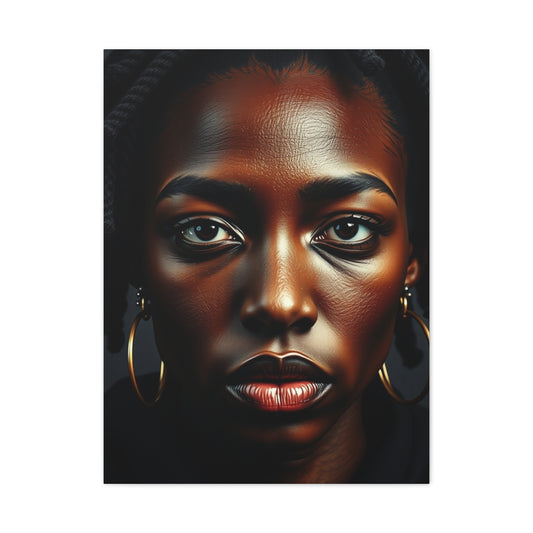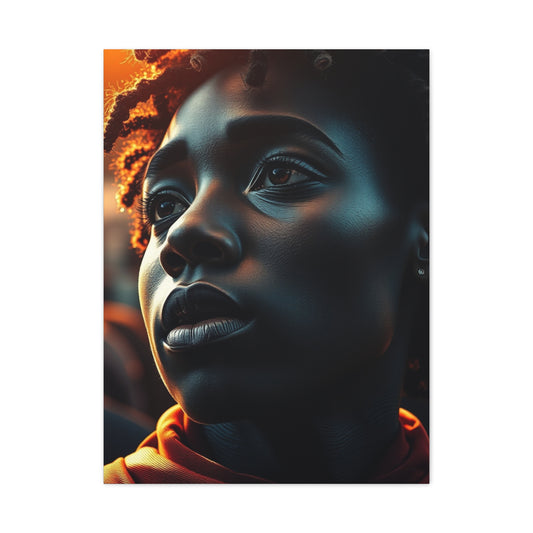Walls are more than boundaries; they serve as expressive surfaces that shape the mood and energy of a home. Through art, textures, and design, these vertical canvases become focal points that inspire, soothe, or energize. Exploring diverse approaches reveals how carefully chosen wall decor transforms living spaces into reflections of personality and refined harmony.
The Living Room as a Canvas
The living room often serves as the core of a home, where atmosphere, style, and function converge in one central space. Its walls can feel either bare and underwhelming or dynamic and expressive, depending on how they are adorned. Viewing the walls as a blank canvas allows creativity to unfold and ensures that the space becomes more than a transitional area. By introducing intentional wall decor, the room reflects identity, emotion, and continuity of design.
The Interplay of Personality and Space
Every element within the living room holds a story, from the furnishings to the textures, but the walls carry the largest responsibility in shaping overall mood. A carefully arranged series of artworks or crafted installations communicates the values, preferences, and memories of those who inhabit the home. Rather than seeing the living room wall as a static background, it can be treated as a vibrant narrative surface, evolving with layers of color, texture, and form.
Exploring Artistic Structures
When approaching wall art, the first decision lies in understanding the structure of the room. High ceilings invite expansive artwork, while compact walls benefit from thoughtfully curated smaller pieces. Symmetry, alignment, and proportion all determine the effectiveness of the chosen decor. A horizontal arrangement can emphasize width, while vertical alignment can make a room appear taller. Geometry and layout therefore become essential considerations when shaping artistic impact.
Metallic Accents as Anchors
One effective method of elevating a wall is through metallic-framed compositions. Metallic finishes have an enduring quality, balancing modern elegance with timeless appeal. When used to frame cherished photographs, architectural imagery, or abstract sketches, the result is a sophisticated blend of sheen and subtlety. The metallic frame does not overpower but instead channels focus toward the subject, creating equilibrium between frame and content.
Infusing Natural Impressions
Incorporating natural elements fosters an atmosphere of tranquility and organic beauty. Pressed flowers, ferns, or delicate leaves preserved in frames transform transient moments into permanent expressions. These works bring the outdoors inward, merging tactile simplicity with refined presentation. Seasonal foliage or rare specimens gathered during walks can be curated into a series of framed panels, each radiating authenticity and nostalgia.
Evoking Memory Through Postcards
Postcards serve as tangible reminders of journeys, relationships, and fleeting experiences. Assembled into a wall display, they create both intimacy and charm. The varied sizes, handwritten notes, and diverse imagery capture fragments of time and geography. Whether displayed in tidy frames or pinned casually in clusters, postcards contribute a narrative collage that conveys a deeply personal dimension of living room decor.
Abstract Marbling for Depth
Textures add another layer of intrigue to walls, and marbled artwork is especially effective in producing visual depth. Created through a mixture of fluid pigments, marbled designs unfold with unpredictability, resulting in swirls of unique patterns. These artworks suggest movement, emotion, and fluidity, ideal for living rooms that thrive on dynamism. Once mounted, marbled compositions enhance the character of even the simplest interiors.
Expansive Landscapes as Storytellers
Landscapes captured in wide frames or stretched canvases hold the power to transport viewers into new realms. A photograph of a mountain range, forest, or seaside not only embellishes the wall but also narrates a story of place and memory. Enlarged and framed, landscapes generate a sense of vastness, encouraging calm reflection and grounding the room with a connection to nature.
|
Related Catagories: |
Handwoven Craftsmanship
The tactile artistry of woven wall hangings offers both cultural resonance and modern relevance. Macrame designs, with intricate knots and tassels, provide warmth and fluidity. Hung in clusters or paired with neutral-toned canvases, these handcrafted pieces bring dimension, texture, and intimacy to the wall. They highlight artisanal craftsmanship while softening the rigid geometry of traditional wall art.
The Art of the Gallery Wall
Gallery walls remain one of the most versatile forms of living room decoration. By arranging multiple artworks, photographs, and prints within a unified framework, they embody diversity within cohesion. Frames may vary in size and style, but thoughtful placement allows them to converse with one another visually. A gallery wall acts as a dynamic centerpiece, combining individuality and collectivity in harmonious fashion.
Blending Contrasts Through Mixed Frames
Not all walls require uniformity. By mixing wooden, metallic, and painted frames, the wall embraces eclecticism. Combining cityscapes, portraits, and sketches within these varied borders produces a dynamic composition that draws the eye repeatedly. This blend resists monotony while fostering visual texture and balance.
Celebrating Companionship Through Pet Portraits
Domestic animals, with their loyalty and character, occupy profound places in the heart of a household. Translating their essence into art—whether through paintings, graphic renderings, or photographs—creates decor infused with affection. These depictions celebrate companionship while adding charm and familiarity to the space.
Heart-Shaped Collage as a Symbol
Few shapes embody unity as effectively as the heart. Arranging photographs into a heart-shaped collage consolidates diverse moments into one collective emblem. The shape conveys warmth and togetherness while creating a striking centerpiece on the wall. It becomes a manifestation of memory bound by love.
Frames as Harmonizing Agents
Frames themselves act as subtle harmonizing agents when chosen thoughtfully. Selecting similar shades or complementary tones across frames can unify diverse artworks, ensuring that variation does not disrupt continuity. This careful coordination produces an atmosphere of balance and design integrity.
Words Woven into Walls
Beyond images, language itself can transform walls. Verses of poetry, fragments of prose, or treasured lines of lyrics inscribed into frames infuse personality into decor. Words resonate with meaning, prompting reflection while simultaneously functioning as art. Placed alone or woven into larger arrangements, they give voice to silent walls.
Playfulness in Colorful Compositions
Vivid tones, whether achieved through paper cutouts, layered designs, or painted textures, inject vitality into a room. By experimenting with bold colors in geometric patterns, circles, or abstract forms, the wall becomes an energetic extension of the home. Such works invite curiosity and conversation, contrasting neutral furnishings with exuberant flair.
Music as Visual Art
Translating auditory beauty into visual expression is a compelling way to enhance a living room. Musical scores, handwritten notes, or fragments of favorite compositions can be preserved within glass frames. They remind viewers of rhythm, melody, and harmony while adding refined charm to the environment.
Panoramic Drama
Large-scale panoramas command attention. Stretching across walls, these pieces create immersive experiences, inviting viewers into vast landscapes or dynamic city skylines. Panoramic works emphasize grandeur, making them ideal for expansive spaces where scale becomes part of the aesthetic.
Incorporating Mirrors as Ornamentation
Mirrors provide more than reflection; they manipulate perception of space. When chosen with decorative frames, mirrors serve both as functional and ornamental pieces. Strategically placed, they capture light, create illusions of depth, and integrate seamlessly with surrounding decor.
Abstract Fluid Painting
The beauty of fluid art lies in its unpredictability. Pigments layered and guided across canvas result in flowing waves of pattern. These pieces appear simultaneously organic and surreal, offering visual intrigue and stimulating imagination. Hung on living room walls, they introduce spontaneity and motion into otherwise static spaces.
Reimagining Everyday Materials
Common objects, when transformed, can offer striking wall installations. Reclaimed window panes converted into photo frames or collages fashioned from magazine scraps prove that artistry can emerge from simplicity. These materials acquire new lives, embodying sustainability while enriching decor.
Textures Through Wooden Elements
Wood, with its natural grain and warmth, introduces organic texture into interiors. Wooden frames, carved ornaments, or even planks repurposed into art panels provide rustic charm. They merge tradition with modernity, grounding the living room with tactile authenticity.
Seasonal Expressions
Rotating wall art in accordance with seasons refreshes the atmosphere continually. Autumn leaves preserved in glass, winter-themed sketches, or spring blossoms pressed into frames all align the living room with nature’s cycles. This approach ensures that the room never feels stagnant but evolves fluidly over time.
Subtlety in Washi Tape Patterns
Decorative tapes can transform walls with ease. By crafting linear designs or geometric motifs, one can experiment with temporary decor that feels intentional yet flexible. The simplicity of tape-based designs ensures adaptability, allowing change whenever new inspiration arises.
The Living Room as Reflection
Ultimately, wall art in the living room is an articulation of identity. Each piece, whether handcrafted, photographed, painted, or assembled, conveys sentiment and story. When viewed collectively, they form a living anthology of experiences and creativity, establishing the room not merely as a gathering place but as a sanctuary of expression.
The Bedroom as an Intimate Retreat
Unlike communal areas, the bedroom thrives on privacy, intimacy, and calm. It is a chamber of rest and reflection, where wall art must align with serenity yet still embody personal identity. Walls in this space do more than host decorations; they shape the rhythm of daily renewal. By infusing artistry into this environment, the bedroom evolves into a cocoon of tranquility, imagination, and emotional resonance.
Symbolism in Dreamlike Imagery
Images selected for bedroom walls often carry symbolic depth. Ethereal skies, gentle waves, or minimalist line drawings evoke subtle emotions that harmonize with relaxation. These dreamlike motifs cultivate an atmosphere of contemplation. A depiction of drifting clouds or a serene horizon can suggest release from daily burdens, encouraging restful thoughts before sleep.
Botanical Prints as Living Energy
Floral and botanical illustrations infuse vibrancy while maintaining delicacy. Detailed renderings of wildflowers, lush leaves, or rare blossoms act as visual breaths of fresh air. In the bedroom, these artworks introduce organic calmness and remind inhabitants of life’s cyclical rhythms. The choice of muted tones or watercolors enhances their subtlety, ensuring balance rather than overstimulation.
Textural Softness Through Fabric Art
While painted canvases dominate many walls, fabric-based art introduces unparalleled warmth. Quilted panels, embroidered motifs, or woven fabric frames exude tactile softness that resonates with the cocoon-like spirit of the bedroom. Hand-stitched artistry particularly conveys patience and heritage, enriching the room with layers of memory.
Harmonizing Tones With Monochrome Art
For spaces that seek understated elegance, monochrome art serves as an ideal solution. Shades of black, white, and grey create a palette of calm neutrality, allowing focus on line, shape, and texture rather than color intensity. Monochrome photographs, minimalist ink drawings, or charcoal sketches produce sophistication while gently framing the mood of restfulness.
Personalized Photographic Journeys
Bedrooms thrive on intimacy, making personal photographs a natural inclusion. Enlarged wedding portraits, cherished family moments, or candid travel captures become narrative anchors for the walls. Their placement above a headboard or along a side wall enhances intimacy while avoiding clutter. Unlike generic art, personal photographs speak directly to the heart, ensuring the room’s decor remains deeply authentic.
Celestial Inspirations
Stars, moons, and cosmic imagery inspire awe while aligning with the nocturnal function of the bedroom. Murals of constellations, watercolor depictions of lunar phases, or abstract interpretations of galaxies spark curiosity and wonder. These celestial motifs remind occupants of vastness beyond daily life, offering perspective and calm.
Water-Inspired Artwork
Flowing rivers, tranquil seas, and gentle rainfall translate beautifully into wall decor. Water, in its many forms, symbolizes renewal and continuity, aligning perfectly with the rejuvenating purpose of the bedroom. Painted waves, soft-hued photographs of lakes, or textured resin art inspired by waterfalls bring rhythmic serenity to the space.
Minimalism as a Statement
Some walls thrive on restraint rather than abundance. A single oversized canvas or a solitary framed sketch can make a profound impact when placed thoughtfully. Minimalist wall art avoids distraction, emphasizing purity of form. The absence of clutter fosters clarity, allowing the mind to rest more fully.
Vertical Alignment for Heightened Grace
Bedrooms with limited space benefit from vertical compositions. Tall mirrors with decorative frames, elongated artworks, or multi-panel designs stretch upward, giving the illusion of height and grace. This alignment not only enhances spatial perception but also introduces a rhythm that complements the flow of drapery and headboards.
Romantic Flourishes in Artistic Expression
Subtle romance can be introduced through thematic choices—gentle silhouettes, intertwined figures, or softly tinted illustrations. Such expressions embody connection and intimacy without overwhelming the senses. They align with the bedroom’s role as a haven of togetherness and quiet affection.
Mirrors With Ornamental Detailing
Mirrors in the bedroom carry both function and artistry. When framed in carved wood, gilded metal, or painted surfaces, they double as decorative statements. Positioned strategically, mirrors reflect both natural light and artwork, enhancing brightness while extending the aesthetic narrative of the wall.
Painted Murals of Imagination
Murals, when executed delicately, transform entire walls into landscapes of imagination. A hand-painted mural of a meadow, night sky, or abstract dreamscape becomes immersive. Murals blur boundaries between art and environment, surrounding the sleeper with enveloping creativity. Each brushstroke contributes to an atmosphere uniquely tailored to the room’s occupants.
Typography as Inspiration
Simple words or phrases, when framed elegantly, carry transformative power. A line from a beloved poem, a philosophical maxim, or even a single evocative word resonates deeply in a space where introspection thrives. Typography in neutral or muted tones ensures subtlety, allowing language itself to guide emotion.
Dimensional Layers With Shadow Boxes
Shadow boxes extend beyond flat imagery, incorporating objects into framed displays. Seashells, dried blossoms, miniature sculptures, or heirlooms within shadow boxes create three-dimensional depth. Their presence brings tangible stories into the bedroom, merging artistry with memory.
Harmonious Symmetry
Pairing artworks or arranging twin frames above bedside tables introduces harmony. Symmetry produces balance, reinforcing the sense of order and calm. While the subjects may vary—floral sketches, abstract forms, or paired photographs—the mirrored placement instills a rhythm that suits restful environments.
Cultural Echoes in Bedroom Walls
Art inspired by global traditions enriches the bedroom with heritage and diversity. Tapestries with intricate motifs, calligraphic expressions, or tribal prints offer cultural authenticity. Incorporating such elements adds depth, transforming the room into both sanctuary and archive of tradition.
Embracing Neutral Palettes
Neutral tones in wall art ensure quietude. Beige, ivory, taupe, or soft grey maintain a soothing visual field, especially vital for sleep. Neutral palettes do not diminish creativity but amplify subtlety, allowing details of texture, pattern, and shape to emerge with clarity.
Dynamic Triptychs
Triptychs—three-panel artworks—establish narrative progression. Whether abstract, figurative, or photographic, they guide the eye across walls with rhythm and continuity. In bedrooms, triptychs work especially well above beds, serving as anchored focal points without overwhelming scale.
Incorporating Sculptural Reliefs
Not all art rests flat against the wall. Sculptural reliefs, carved from plaster, wood, or ceramic, introduce tactile depth. Their shadows shift with light, creating subtle dynamism throughout the day. Reliefs marry art and architecture, enhancing walls with quiet drama.
Watercolor Serenity
Watercolors, with their fluid transparency, epitomize gentleness. Scenes of countryside, blossoms, or abstract washes calm the senses. Unlike bold oils or acrylics, watercolors whisper rather than shout, making them particularly suited for restful bedroom environments.
Integrating Lighting With Art
Art gains additional power when paired with thoughtful lighting. Wall-mounted sconces framing a piece, hidden LEDs illuminating edges, or soft uplighting beneath canvases extend visual impact into the night. Light transforms static art into evolving experiences, complementing the intimacy of the bedroom.
Family Heirlooms as Artistic Presence
Inherited pieces—embroidered cloths, antique sketches, or framed letters—imbue the room with lineage and memory. Beyond their aesthetic, heirlooms embody continuity, connecting present lives with ancestral stories. Displaying them on walls ensures history remains visible in daily life.
Seasonal Textiles
Fabric art can shift with the seasons. Lightweight pastel tapestries in spring, woven wool hangings in winter, or rich-toned cloths in autumn subtly change the mood of the bedroom. These textiles reflect the cycles of time, enriching the atmosphere with seasonal fluidity.
Harmonizing With Architecture
Wall art must converse with architectural elements such as windows, alcoves, or headboards. Arched frames complement curved headboards, while linear pieces emphasize angular layouts. Alignment with architectural rhythm ensures cohesion, where art feels integral rather than imposed.
The Bedroom as a Reflection of Self
Ultimately, the walls of the bedroom encapsulate identity in its most intimate form. Whether through abstract calm, familial warmth, or symbolic imagery, they narrate personal stories with quiet strength. Through intentional selection, the bedroom becomes not merely a place of rest but a sanctuary of inner reflection and timeless beauty.
The Dining Room as a Social Hub
The dining room carries a distinctive role in the home. Unlike the private serenity of a bedroom or the relaxed atmosphere of a living room, this space is alive with conversation, connection, and shared meals. The walls within this setting shape ambiance, making gatherings either warm and inviting or cold and impersonal. Through deliberate art choices, the dining room transforms into a dialogue-rich environment that stimulates appetite and fosters memorable interactions.
Celebrating Culinary Heritage
Artworks inspired by food traditions add thematic resonance to dining rooms. Painted still lifes of fruits, herbs, or rustic kitchens recall centuries of artistic exploration in cuisine. They not only celebrate abundance but also ground meals within cultural narratives. A canvas of grapes, bread, and earthen jugs, for instance, connects the present dining ritual with timeless artistry.
Abstract Expressions of Flavor
Abstract paintings offer unconventional but powerful ways to symbolize flavor and energy. Vibrant splashes of red, orange, and gold can suggest warmth, spice, and festivity, while cooler tones convey refinement. Such works create emotional parallels between visual stimuli and taste, enriching the dining experience through layered sensory association.
Vintage Posters as Nostalgic Charm
Old-fashioned café advertisements, vineyard posters, or retro beverage prints bring nostalgia into dining spaces. These works evoke eras of artisanal craft and conviviality, conjuring images of bustling marketplaces and intimate bistros. When displayed in clusters or framed individually, they anchor the room in history while keeping it lively and accessible.
Sculptural Installations for Depth
Dining rooms benefit from three-dimensional art forms that extend beyond traditional canvases. Sculptural metal wall hangings, ceramic plates arranged in artistic patterns, or wooden carvings create tactile presence. Their shadows and textures shift with lighting, offering dynamic visual intrigue during meals. Such installations ensure the dining room feels vibrant and engaging.
Murals That Set the Stage
Murals can envelop the dining area with immersive storytelling. A vineyard panorama, a painted orchard, or even an abstract mural of flowing lines gives diners a backdrop that heightens atmosphere. When hand-painted, murals carry authenticity, embodying both artistic labor and lasting presence within the home.
Geometric Arrangements for Balance
Structured geometry in wall art cultivates harmony in dining spaces. Grids of framed artworks, diamond-shaped mirror clusters, or triangular panels generate rhythm and balance. Such arrangements appeal to the eye’s preference for order, providing a stable visual counterpart to the dynamic energy of dining conversations.
Textural Panels of Wood and Stone
Dining rooms thrive on natural textures. Wooden slats arranged as wall art or stone mosaics introduce tactile grounding. These elements remind diners of raw earthiness, aligning with the organic act of nourishment. By integrating natural panels into decor, the walls echo authenticity and warmth.
Incorporating Cultural Motifs
Celebrating cultural artistry within the dining room lends authenticity to shared meals. Mandalas, arabesques, or folk-inspired patterns represent collective creativity across civilizations. Displaying such motifs honors diversity and connects dining rituals to broader human traditions of gathering and feasting.
Photographic Narratives of Gatherings
Photography can immortalize the very spirit of shared meals. Black-and-white captures of family feasts, candid portraits of laughter, or images of communal celebrations breathe life into dining room walls. These photographs emphasize togetherness, reinforcing the dining room as a place of unity.
Lighting as an Extension of Art
In dining spaces, lighting often accentuates wall art, transforming it into part of the experience. Spotlights above canvases, pendant lamps reflecting on metallic surfaces, or subtle LEDs behind sculptural pieces amplify mood. The interplay between illumination and artwork fosters a theatrical effect, enhancing both conversation and cuisine.
Mirrors as Instruments of Expansion
Mirrors placed within the dining room amplify space and reflect convivial gatherings. Beyond utility, ornate or minimalist mirrors double as decor. They reflect candlelight, floral arrangements, and laughter, multiplying warmth. Positioned carefully, they integrate into the aesthetic flow while broadening the room’s perceived dimensions.
Eclectic Collages for Energy
Collages of diverse elements—tickets, recipe cards, travel snapshots, or wine labels—infuse the dining room with eclectic charm. Such walls tell layered stories, sparking curiosity during meals. The juxtaposition of textures and colors prevents monotony, turning walls into visual feasts that mirror culinary variety.
Seasonal Rotations of Art
Adapting wall decor to seasonal rhythms ensures the dining room remains vibrant year-round. Autumnal leaf prints, winter snow-scapes, spring blossoms, or summer harvest illustrations echo nature’s cycles. Seasonal adaptation keeps gatherings refreshing, aligning the dining space with time’s passage.
Functional Art Through Shelving
Shelves used as platforms for artful displays offer dual function. Ceramic bowls, glassware, or handmade pottery arranged with intent elevate walls while remaining practical. Floating shelves balance artistry with utility, embodying both elegance and efficiency within the dining room.
Minimalist Canvases for Calm Meals
While many dining spaces thrive on vibrancy, others benefit from restraint. Minimalist canvases in neutral palettes foster an atmosphere of calm dining. This subtlety prevents overstimulation, allowing meals and conversation to remain the central focus while art provides an understated complement.
Large-Scale Photography for Immersion
Oversized photographs, whether depicting vineyards, cityscapes, or pastoral scenes, draw diners into immersive environments. Enlarged works dominate walls with presence, surrounding guests in narrative landscapes that enrich the meal experience. Their scale transforms art from decoration into atmosphere.
Playful Illustrations for Family Dining
Family-oriented dining rooms often flourish with whimsical artwork. Cheerful illustrations of fruits, animals, or stylized table settings encourage lightheartedness. These works establish approachability, ensuring the dining room feels inclusive for guests of all ages.
Modern Metal Accents
Metallic artworks—copper, brass, or steel wall panels—add sleek sophistication. Laser-cut patterns or hammered metal surfaces reflect ambient light, merging elegance with strength. In dining contexts, these metallic accents project refinement, particularly when paired with contemporary furniture.
Symmetry Across Walls
Balanced arrangements of paired frames or dual panels anchor dining spaces with order. Symmetry resonates with rituals of dining, where tables, chairs, and place settings already embody rhythm. Such orderliness offers reassurance, fostering peaceful flow during gatherings.
Storytelling Through Maps
Maps function as art and narrative combined. Vintage charts, contemporary city plans, or hand-drawn illustrations of regions where memorable meals occurred infuse personal significance. Maps transform walls into stories of travel, cuisine, and culture.
Tactile Expression With Ceramics
Ceramic art brings earthy tactility to walls. Plates glazed in varying colors, tiles arranged into mosaics, or sculptural clay panels provide textural richness. Ceramics highlight artisanal craft, echoing the handmade beauty often found in cooking itself.
Dynamic Triptychs in Dining Spaces
Three-panel artworks offer continuity and rhythm. Whether depicting abstract swirls, culinary subjects, or natural landscapes, triptychs guide visual movement across walls. Positioned above a long dining table, they parallel the linearity of the furniture, reinforcing cohesion.
Artistic Statements in Typography
Words themselves—expressions of gratitude, maxims about gathering, or poetic lines on abundance—can adorn dining walls. Typography transforms language into art, offering reflective prompts that enhance the spirit of dining as more than sustenance but also connection.
The Dining Room as Collective Expression
In essence, dining room walls embody the spirit of gathering. Through murals, photography, sculpture, or typography, they create visual dialogues that mirror spoken conversations around the table. With every meal, the artwork reinforces unity, ensuring that the room becomes not only a site of nourishment but also a gallery of human connection.
The Bedroom as a Personal Sanctuary
The bedroom is more than a place for rest; it is a deeply intimate retreat where comfort, reflection, and peace converge. Every detail in this space, from textiles to lighting, contributes to a sense of belonging. Among these, wall art plays an extraordinary role in shaping emotional balance. Unlike communal spaces, bedroom art should speak directly to the individual, aligning with inner rhythms and nurturing calm.
Calming Palettes for Restorative Sleep
Colors carry strong psychological effects, especially in a bedroom. Soft tones such as muted blues, gentle lavenders, warm taupes, or pastel greens encourage relaxation. When infused into wall art, these palettes soothe the senses. Watercolor washes, lightly textured canvases, or misty seascapes create restful visuals that prepare the mind for restorative sleep.
Personal Symbolism in Abstract Works
Abstract art thrives in bedrooms when it is chosen for personal resonance. A series of fluid brushstrokes may evoke memories of the ocean, while geometric shapes might reflect a preference for order and harmony. Because interpretation remains open-ended, abstract works serve as mirrors of the self, adapting to the emotions of the viewer.
Botanical Illustrations for Renewal
Detailed drawings or prints of flora bring organic serenity to bedroom walls. Botanical illustrations of ferns, blossoms, or herbs offer more than decoration; they suggest cycles of growth, renewal, and grounding in nature. Their subtle intricacy encourages quiet reflection, making them ideal companions to moments of solitude.
Dreamlike Photography as Escape
Bedrooms invite art that acts as a portal. Photography of faraway landscapes, mist-covered mountains, or starry skies fosters daydreaming and imaginative escape. Such imagery expands the sense of space, allowing the room to feel larger and more connected to the wider world beyond its walls.
|
Related Catagories: |
Ethereal Textiles on Display
Textiles can transform into wall art with minimal intervention. A delicately woven tapestry, a hand-dyed piece of fabric, or an embroidered panel introduces softness and dimension. Their textures capture light differently from paint or print, adding tactile comfort to the room’s atmosphere.
Mandalas and Sacred Geometry
Mandalas or geometric patterns embody symmetry and spiritual resonance. Their concentric designs encourage focus and meditative calm. When placed above a bed or on a feature wall, they provide a visual anchor, reminding the inhabitant of balance and continuity in both life and rest.
Subtle Sculptural Forms
Wall-mounted sculptures crafted from wood, clay, or resin extend serenity into three dimensions. Unlike bold installations suited for dining or living areas, bedroom sculptures should be understated—curved forms, minimalist carvings, or flowing lines that promote peace without overwhelming the senses.
Memory Walls for Personal Narratives
Bedrooms welcome the intimacy of memory. Curating a wall with photographs of loved ones, hand-written notes, or keepsakes builds a private gallery of cherished moments. Unlike public spaces, these memory walls remain deeply personal, acting as silent companions in the quiet hours.
Minimalist Canvases for Mental Clarity
Minimalist art provides mental clarity. A monochrome canvas with a single line or a faint texture embodies restraint, mirroring the simplicity often desired in bedrooms. By removing distraction, minimalist works encourage focus on rest, ensuring the mind drifts toward calm rather than overstimulation.
Celestial Inspirations in Art
The bedroom has long been associated with the cosmos—stars, moons, and celestial cycles guiding rhythms of sleep and dream. Wall art inspired by constellations, lunar phases, or abstract depictions of galaxies resonates deeply here. Their mystical quality invites wonder and aligns the space with natural cosmic patterns.
Handmade Craftwork as Soulful Decor
Handmade elements such as macramé, woven dreamcatchers, or painted wooden plaques bring soulful authenticity. Each handcrafted piece carries the imprint of human touch, reminding the inhabitant of artistry’s ability to ground and comfort. The imperfections of handmade work enhance its charm, fostering intimacy.
Large Panels for Statement Serenity
Single large panels—whether paintings, photographs, or mixed-media works—can anchor bedroom walls with calm authority. A panoramic view of misty forests or a serene seascape, stretching across a wide canvas, provides presence without clutter. Such works simplify the visual field, contributing to tranquility.
Literary Quotes as Visual Anchors
In bedrooms, words take on gentle significance. Art that incorporates poetry, affirmations, or fragments of literature offers reflective pauses before rest. Typography styled with restraint ensures these words complement rather than dominate, acting as nightly reminders of inspiration or peace.
Seasonal Adaptability in Bedroom Walls
Bedrooms thrive when decor evolves with the seasons. Light, floral prints for spring, warm rustic tones for autumn, or snowy landscapes for winter keep the environment in sync with external cycles. These seasonal transitions infuse the space with freshness, preventing monotony.
Harmonious Pairings Above the Bed
Artwork above the bed often sets the tone for the entire room. Pairing two complementary pieces—mirrored abstracts, botanical duos, or matching panels—establishes harmony. Such symmetry aligns with the bed’s centrality, framing it as the core of the sanctuary.
Light as a Partner to Art
Art in bedrooms often transforms under different lighting conditions. A canvas lit by soft lamps glows warmly, while natural morning light may reveal new dimensions. Adjustable lighting allows art to evolve throughout the day, making it an active partner in shaping atmosphere.
Layered Textures for Depth
Combining different materials on bedroom walls creates depth. A woven tapestry alongside a minimalist photograph, or a sculptural wooden piece near a soft watercolor, generates layers of texture. These juxtapositions enrich the room without overwhelming, echoing the complexity of personal identity.
Gentle Water-Inspired Themes
Water symbolizes renewal, calm, and continuity. Paintings of rivers, lakes, or abstract wave forms bring a fluid rhythm to bedroom walls. The imagery of water calms the subconscious, promoting dreams that mirror the gentle ebb and flow of tides.
Symbolic Color Studies
Bedrooms benefit from artwork that explores symbolic uses of color. Soft greens represent healing, muted blues serenity, and warm pinks compassion. When artists use these shades deliberately, the works become more than aesthetic—they transform into quiet tools for emotional restoration.
Collages of Personal Inspiration
Personal collages crafted from magazine clippings, sketches, or travel mementos offer intimacy unique to bedrooms. Unlike professional artwork, collages speak directly to the creator’s identity, reminding them of aspirations, memories, and joys. Their handmade nature imbues authenticity.
Shadows as Artistic Elements
Wall-mounted installations in bedrooms often play with shadow as much as form. A sculptural lamp, a cut-out metal design, or even branches positioned artfully on the wall create evolving shadow patterns. These ephemeral shapes add subtle magic to nighttime environments.
Organic Materials in Bedroom Art
Natural materials such as driftwood, clay, linen, or bamboo introduce grounding energy. When shaped into wall decor, they connect the room to earth, reminding its inhabitants of natural rhythms. Organic elements soften the boundaries between interior sanctuary and external environment.
Circular Compositions for Wholeness
Circles carry symbolic meaning of completeness and unity. Circular wall art—mirrors, mandalas, or round canvases—introduces balance into bedrooms. Their form resonates with cycles of day and night, echoing the eternal return of sleep and awakening.
Integrating Sound With Wall Pieces
Certain artworks can incorporate sound elements, such as chimes or subtle resonant panels. When gently moved by air or touched, they create soft auditory layers. In bedrooms, this multisensory approach enhances serenity, blending visual calm with auditory stillness.
Personal Portraits as Companionship
Portraits, whether of loved ones, ancestors, or self-portraits, provide quiet companionship in bedrooms. They serve as reminders of identity and connection, offering a silent presence that comforts during solitude. When rendered with sensitivity, such portraits carry emotional weight without overwhelming intimacy.
The Role of Transitional Spaces
Hallways, staircases, and entryways often carry less attention than central rooms, yet they serve as crucial arteries within a home. These areas guide movement, connecting spaces while shaping impressions. The wall art chosen for these transitional zones sets rhythm, ensures continuity, and provides subtle intrigue. Rather than being overlooked, these walls can become silent storytellers, guiding the journey through a house with elegance and meaning.
Creating Movement With Linear Designs
Artworks that emphasize direction amplify the sense of flow in hallways. Linear paintings, elongated panels, or vertical stripes guide the eye along the path, encouraging forward momentum. This approach reflects the natural function of transitional spaces, where movement is inherent. By visually echoing the act of walking, linear designs harmonize energy.
Staircase Murals as Vertical Narratives
Staircases lend themselves to storytelling that unfolds with each step. A mural spanning upward along the wall can depict gradual transformations—rising landscapes, shifting skies, or abstract evolutions. This vertical art experience engages both motion and narrative, turning an ordinary climb into a journey of discovery.
Gallery-Like Arrangements
Hallways can easily transform into miniature galleries. Rows of framed artworks—whether portraits, landscapes, or abstract studies—create a curated atmosphere. Unlike a museum’s formality, these galleries remain intimate, reflecting the homeowner’s values and tastes. Visitors moving through such halls engage with art in passing, making each transition memorable.
Mirrors for Light and Continuity
Mirrors enrich transitional spaces by multiplying light and extending perspective. In narrow corridors, they alleviate confinement by reflecting openness. Ornate frames can serve as decorative accents, while minimalist styles amplify modernity. By reflecting adjacent artworks or natural light, mirrors integrate with surrounding decor, doubling impact.
Shadow Play in Transitional Areas
Hallways and staircases often experience shifting light, whether from windows, sconces, or overhead fixtures. Wall art designed to interact with light—such as cut-out panels, layered sculptures, or metallic surfaces—creates evolving shadow patterns. These transient artworks change throughout the day, keeping passageways lively and ever-renewed.
Personal Narratives in Entryways
Entryways serve as the threshold between public and private realms. Wall art here introduces the essence of the home. A single bold canvas, a welcoming photograph, or an abstract piece with inviting tones sets the emotional tone. The entryway’s walls become the handshake of the household, offering guests a glimpse of its character.
Textural Surfaces for Tactile Appeal
Transition areas gain depth from textured art. Relief carvings, woven panels, or clay-based works break flatness, introducing tactile variation. These textures invite touch, even if only imagined, enriching the sensory experience of moving through these spaces. They balance the transitory function with grounding physicality.
Historical Echoes Through Vintage Art
Vintage maps, family heirlooms, or antique prints infuse hallways with a sense of continuity. These historical echoes remind inhabitants of lineage and passage through time. Displayed in simple frames or weathered wood, such works root transitional spaces in memory, turning movement into reflection.
Expansive Photography for Depth
Large-scale photographs in corridors or stairwells can transform confined zones into open vistas. Panoramic mountain ranges, architectural marvels, or expansive skies extend the space visually. These illusions of depth not only counter narrowness but also transport viewers into imagined landscapes mid-journey.
Repetition for Rhythm
Repeating patterns—whether identical frames, aligned geometric shapes, or recurring motifs—establish rhythm in transitional spaces. This repetition mirrors the repetitive act of walking, creating harmony between movement and design. Subtle variations within repetition, such as changing colors or subjects, sustain visual interest.
Playful Whimsy in Passageways
Not all art in transitional areas must be solemn. Hallways especially welcome playful or experimental works. Bright illustrations, quirky collages, or unexpected shapes provide lighthearted surprises along the journey. These moments of delight energize spaces otherwise seen as purely functional.
Sculptural Installations Along Corridors
Corridors with ample space benefit from sculptural wall art. Slim reliefs, metallic arrangements, or flowing wooden designs maintain intrigue without encroaching on movement. Their shadows evolve with light, ensuring walls feel alive rather than static. The corridor thus transforms into an immersive art installation.
Typography for Daily Inspiration
Words along hallway walls offer fleeting yet powerful reminders. Phrases of encouragement, poetic lines, or symbolic dates can be etched, painted, or framed. Transitional spaces, where individuals pass repeatedly, become stages for gentle affirmations that integrate seamlessly into daily routine.
Seasonal Displays in Transitional Zones
Hallways and entryways provide perfect canvases for rotating seasonal art. Autumnal wreaths, spring blossoms, or wintry silhouettes keep these spaces aligned with nature’s cycles. Because these zones are highly visible yet not central gathering areas, they adapt easily to temporary shifts without disrupting overall design.
Integrating Nature Through Organic Art
Branches mounted as sculptures, pressed leaves in frames, or driftwood arrangements introduce natural harmony into transitional areas. These organic inclusions balance the often utilitarian function of passageways, connecting them with the broader rhythms of the natural world.
Color Gradients for Directional Flow
Artworks featuring gradual transitions of color amplify the sensation of movement. A gradient shifting from deep indigo at one end of a hall to pale blue at the other guides the journey. These chromatic flows reflect transition itself, reinforcing the symbolic passage between spaces.
Children’s Creativity on Display
Hallways outside bedrooms often serve as perfect spaces to celebrate youthful imagination. Framed children’s drawings, collages, or painted handprints provide authenticity and warmth. These works remind all inhabitants of innocence, creativity, and growth, aligning passageways with personal history.
Art Niches in Stairwells
Stairwells frequently feature alcoves or landings that invite focused displays. A sculptural vase on a ledge, a single framed piece illuminated by a spotlight, or a tall vertical painting enriches these architectural pauses. These niches transform functional voids into focal points of beauty.
Monochrome Studies for Elegance
Black-and-white artwork brings refined elegance to transitional zones. Photography, sketches, or minimalist line art in monochrome tones create timeless balance. Their simplicity complements the often narrow scale of hallways, ensuring walls remain dignified yet understated.
Large Statement Clocks as Art
Functional objects can serve dual purposes. Oversized wall clocks, especially with artistic detailing, become central art features. They connect passageways to the rhythm of time while acting as sculptural elements that unify design and purpose.
Symbolic Art for Reflection
Art chosen for its symbolism enriches transitional zones. A painting of a bridge may represent connection, while circular motifs suggest continuity. Placing such works in passageways aligns meaning with movement, deepening the psychological resonance of daily transit.
Mosaic Walls for Visual Energy
Colorful mosaics bring vibrancy to transitional spaces. Made from glass, ceramic, or stone, mosaics provide texture, rhythm, and energy. Their intricate compositions invite lingering gazes, elevating even the briefest walk through a hallway into a sensory journey.
Integrating Sound in Transitional Art
Certain wall installations may incorporate subtle chimes or resonant materials. In entryways, these auditory notes greet visitors with warmth. In stairwells, they add atmospheric charm, turning motion into multisensory experience where art interacts with air and movement.
Transitional Spaces as Unifying Threads
Ultimately, hallways and staircases are more than connectors; they embody flow, rhythm, and transition. By selecting wall art that celebrates light, texture, symbolism, or playfulness, these overlooked spaces gain presence. They transform from mere passageways into unifying threads, weaving together the diverse expressions found throughout the home.
Conclusion
The essence of wall art lies not merely in decoration but in its capacity to enrich everyday experiences. From grand living rooms to intimate hallways, each wall offers an opportunity to evoke feeling, memory, and identity. Through textures, narratives, colors, and light, these surfaces gain character, guiding movement and conversation while nurturing atmosphere. Each artistic decision becomes a thread in the broader fabric of home design, weaving unity and expression throughout spaces. By embracing balance between function and beauty, walls transcend their structural role to embody meaning and individuality. Whether through bold statement pieces, subtle gradients, or playful whimsy, wall art acts as the silent companion of domestic life. Its influence stretches beyond visual pleasure, shaping rhythm, flow, and emotion. In honoring the potential of walls, one creates a home that resonates deeply with personal spirit and timeless elegance.



























